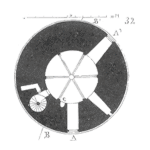
How is it that some people continue to get better at managing meetings, designing complex test plans, making presentations, or solving problems? How in general do people improve their performance over time at something? [Read more…]
Your Reliability Engineering Professional Development Site
Short essays and thoughts (musings) on reliability and maintenance engineering topics.
Let me know your reaction and thought, plus any questions.
ISSN 2329-0080
by Fred Schenkelberg Leave a Comment

How is it that some people continue to get better at managing meetings, designing complex test plans, making presentations, or solving problems? How in general do people improve their performance over time at something? [Read more…]
by Fred Schenkelberg Leave a Comment

Some time ago when talking with someone I just met, the conversation turned to what we did for a living. I mentioned being a reliability engineer, and his response: “Oh, yes, we do reliability”. Curious, as I’m not sure that I ‘do reliability’, we then talked about what he meant.
The conversation revealed that they had a list of tasks that they accomplished for each product under development. They did tests and reviews of the results. A lot of testing. They did FMEA and HALT. He believed the engineers did derating or stress/strength calculation. He didn’t know about process stability with vendors or internal manufacturing lines.
They did stuff, which meant they did reliability.
by Fred Schenkelberg Leave a Comment

Some time ago, earlier in my career, I worked for a wonderful boss. She would stop by my office on occasion and ask ‘what’s new?’ or “how’s it going?’ Just a check-in. I often let her know about the current vexing problem I was struggling with at the moment.
The funny thing is she never directly solve the problem for me. She certainly could have. Instead, she would ask a couple of questions that always helped me to find the solution. This happened with problems concerning dealing with a difficult person, strange material properties, motivating change within a group, or finding someone that could design and run a computational fluid dynamic model for me.
It was her questions the helped. She did this in meetings, in presentations, and when she swung by my office for a chat. [Read more…]
by Fred Schenkelberg Leave a Comment

In a recent blog post, Seth Goin discussed the need for ongoing investment to maintain infrastructure. Whether a road or building or even your own skills, it takes regular care to avoid system failures or obsolesce. [Read more…]
by Fred Schenkelberg Leave a Comment

Statistical process control, SPC, is a set of tools to enable monitoring the stability of a process. SPC is also the first step to checking process capability with measures such as Cpk. Many consider SPC a quality or manufacturing tool. Yet, having and maintaining a stable process is also essential to creating a reliable product. Let me explain why. [Read more…]
by Fred Schenkelberg Leave a Comment

Very few reliability decisions are made by reliability engineers. Yet, reliability engineers are asked many questions concerning reliability. How reliable will this design be for customers? How will the system likely fail? How many failures should we expect next month?
How you answer these and the many other questions received does impact the reliability of your product or system. The information provided those that ask reliability related questions, with useful and practical information, can make better decisions which improves reliability performance.
by Fred Schenkelberg Leave a Comment

An immediate purpose is to earn a living. You also may suggest the work is to improve the reliability of the product or system. Reduce downtime, reduce warranty, increase profit, etc.
That is fine for the overall purpose of reliability engineering work, yet in the day to day work, the specific task level, what is the purpose behind what we do?
by Fred Schenkelberg 1 Comment

Yesterday had the chance to review the long list of Design for X topics. Assembly, environment, maintainability, and of course reliability, plus about a dozen other areas of focus. How is a design team to navigate all these different sets of constraints and objectives along with crafting a solution that works?
With a little creativity, you could relate every Design for X topic to reliability. Easier to assembly, fewer assembly errors leading to field failures, for example.
Another way to think about the Design for X space is to consider a superset instead. What are all these design considerations really about? What is common, including the design for reliability topic? With a little thought, it seems clear to me that we all are really considering how to identify and manage risk. [Read more…]
by Fred Schenkelberg Leave a Comment

“Speak with Data!” commanded my former general manager. “Let the Data Sing” is an article I wrote long ago. We all have data, often too much data. We like to present based on what the data says. Yet, sometimes the speaking with data is not clear.
If you’ve done the data gathering, the analysis, the summary, all based on the data, how can you best reveal what the data says to enhance your results and recommendations?
Just because you can add a 3D pie chart doesn’t mean you should. Crafting meaningful charts is only one part of the puzzle. You also have to present the data in a clear and meaningful manner. Here is a set of suggestions to consider the next time you are preparing and presenting when data is involved. [Read more…]
by Fred Schenkelberg Leave a Comment

As reliability professionals, we have a lot to do. Risks to identify, failures to analyze. Plans to draft, numbers to crunch. Meetings, writing, research, and leading fill the day.
The list of tasks that you have before you each day is impressive and daunting. So, how do you focus on what actually requires your attention and not just the tasks that get your attention?
by Fred Schenkelberg Leave a Comment

If we set a product reliability goal of 99% reliable over two years in the requirements document, what are we supposed to do tomorrow? On the other hand, if our goal is to write 1,000 pages for the next great novel by the end of the year and we have no pages written so far, well, we should write a page or two tomorrow.
A good goal provides a vision, a measurable milestone, a target. What it lacks is what we do from now till achieving that goal. If the goal is 1,000 pages in 365 days, we may want to set up a process to write at least 3 pages per day.
So, given a reliability goal, what do we do tomorrow, next week, and each week between now and when the goal is due?
In previous work, I’ve written about setting reliability goals, connecting the goal to customer expectations, technical capability, and business needs. Plus, have written about the four (five) parts of a complete goal, including Function(s), Environment, Duration, and Probability (and all four continue to get more difficult as customers expect more).
A well-stated reliability goal provides direction and a measurable target for the entire team. It provides a basis to compare progress and to help frame “is the design reliable enough yet” discussions.
This is all well and good, yet is it enough? [Read more…]
by Fred Schenkelberg Leave a Comment

I often joke that being a reliability engineer makes it difficult to get on an airplane. Yet air travel is by far the safest method of transportation. Maybe I just think about failure too much.
When a project manager views the day’s tasks, she sees timelines, connections, dependencies. When a marketing manager views a product idea, she sees benefits, sales channels, and profits. When a reliability engineer views a prototype, she sees the many ways it can fail.
Underlying how we view the world includes our assumptions, reasoning, and experience. We understand the world around us via the set of filters we use. We form conclusions and make decisions much the same way. Quickly and mostly automatically. [Read more…]
by Fred Schenkelberg Leave a Comment

One of my standing searches revealed an article that has shows a nice example of reliability data analysis. The author analyzed the time-to-violent-death of Roman emperors. The article is interesting in a historical sense plus illustrates a few key points for any life data analysis.
The article, “Statistical reliability analysis for the most dangerous occupation: Roman Emperor” by Joseph Homer Saleh takes a look at the 69 Roman emperors and 62% of them that suffered a violent death. The idea of the study was to determine if there is some pattern to the deaths and if the analysis would reveal any insights for those studying the era of the Roman emperors. [Read more…]
by Fred Schenkelberg 1 Comment

Some may argue that just enough reliability data is just the right amount. Too much may lead to confusion, too little doesn’t inform well. The reliability work we do helps others make decisions, and recent work in how humans make decisions may help us prepare and present our results effectively.
If preparing reliability data-based recommendations, consider using less information. Ed O’Brien and Nadav Klein have found decision-makers tend to use much less data or information to make a decision than they think they will need.
If using data and the derived information to make a decision consider the situation carefully to know when to use a structured decision-making approach or to simply go with your gut. Daniel Kahneman and Gary Klein provide some insights and basic guidelines for decision making. [Read more…]
by Fred Schenkelberg Leave a Comment

I have found the best way to lose an audience is to focus on statistical derivation. While this is a fascinating subject for me, it just doesn’t seem to hold an audience’s attention.
Having something interesting and useful to say is key to maintaining an audience’s attention, yet at times how we present helps them become distracted.
So, given great content or proposal, how can you help your audience not quickly check their phone, yet again? [Read more…]